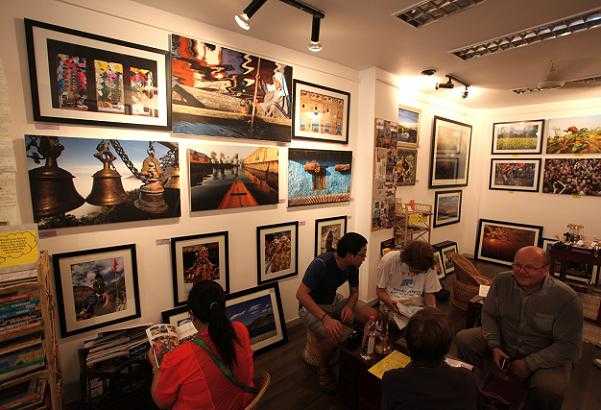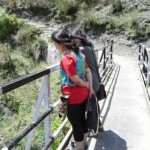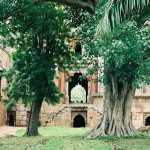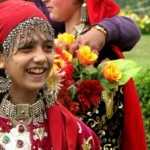The Hauz Khas village is still one of Delhi’s prettier areas. As most of my friends say, “It really does not look like Delhi at all,” with small French cafés, Lebanese and Oriental restaurants jutting out on both sides of one long-winding, thin road. Art galleries and stores selling vintage Bollywood posters too push their way stubbornly into the front and stand amid the restaurants, so what you have, resultantly, is a rather quaint yet charming potpourri.
I am heading towards Kunzum Travel Café. The previous night, having again seen Edward Zwick’s Blood Diamond, I am itching to read about Africa, Sierra Leone, the diamond trade and more. But I have been stubborn enough to not install an internet connection in my house. (“Must not be addicted to a computer! Must read books, yo,” I have proclaimed to all and sundry.) So I must now wait impatiently for the next day when I can go to a café with a wi-fi connection and spend some hours absorbing a fraction of Africa’s bloody tales.
For people who do not know of Kunzum, it is best described as a small travel café with a unique concept. People coming in can sit in for as long as they want, drink the various teas or coffee available, read books or magazines on travel, from the shelves and even use the wi-fi. And at the end of it, when they leave, they aren’t charged anything by the café, and are free to pay whatever money they feel like. Owner Ajay Jain must be a brave man. He is also an avid traveler and photographer.
The café lies in a small lane curving left off the main street, just before the entrance of the Hauz Khas Ruins Complex. Kunzum is pretty, no doubt. There are a row of framed photographs displayed along the length of the walls. Between the two ends of the room, there are a number of cane chairs, baskets and cushions for people to sit on. The room is deliciously warm.

Soon, I am reading an Amnesty International document on the diamond trade. You can ask for Chai or coffee here, and choose from the various types on display. A friend’s pinging me and asks me if I want to be part of a Delhi flash mob dance that is somehow meant to reflect our ire at how the city treats women. I like dancing, so I say yes.
When I feel restless, I look around. I have been to Kunzum a number of times, and the crowd profile does not change all that much. Broadly, they can be categorized into five different social groups. Do note that there has been an alarmingly high level of stereotype that has been thrown in to derive this outstanding analysis, for what is humour if it doesn’t only concentrate on the facts that it wants to.
a) The DU kids
– It does not take a Sherlock Holmes to figure this set out. At least fifty percent of them are wearing a college sweatshirt or t-shirt. This breed is usually having a grave discussion on an upcoming college festival or play, sprawled not so gravely on the cushions. It is also the only group that will speak in Hindi in Kunzum. The other species somehow develop a Hindi-amnesia the moment they enter the Village, of course as long as it is not an all-boys group.
b) The lone foreigner
– Usually a girl. If India’s inbound tourism statistics were to be determined by the audience at Kunzum, it would undoubtedly be established that the demographic profile of the most probable type of foreigner visiting India is a girl, in her early twenties, from Europe. This specie will generally be found sitting with a book on Ladakh. If you are male, single and appreciate cross country pollination, next time you go to the café, pretend you are on a call and speak loudly about how much fun it was bathing in Pangong Lake or how great Lamayuru monastery was. You might not get a date, but if I am there it’ll be great fun to realize that I can actually get people to do what I want them to.
c) The group that is competing for the coolest traveler award
– There is always a set of people who have just got back from their individual trips, and are planning a next. In this particular flock, there is an unspoken hierarchy that will be established during the course of this Kunzum visit. The basis of this hierarchy would be decided by the places they visited. The more offbeat the place, the higher the ratings of the person who visited it.
Traveller 1: “Dude, you should visit Chamba. It is a ****ing awesome place.” (6 points)
Traveller 2: “You been to Spiti? I stayed in a monastery for a week and it was such a humbling experience, man” (8 points. 5 for the destination, a bonus 3 for staying in a monastery, instead of a comfortable hotel)
Traveller 3: “Yeah? That’s nothing, people. I just came back from the Kumbh Mela. One billion naga sadhus, all running mad and naked. I even rolled joints for them, bro.” (3 billion points)
d) Indian hosts and foreign guests group
– Two couples, one desi and one videsi. The Indian girl is usually super enthused and is telling her guests all the places they ‘must’ see in Delhi. “Parathe wali gali,” she says and there is a certain accent that has crept into her voice since they came into her home and life,” is a must. The parathas, there, are to die for,” she drawls and looks at her partner for approval. He shakes his head sheepishly, and maybe we both think that it is overrated, just like any good place that turned into a gigantic brand. “We will take you to Chandni Chowk and buy jootis,” she continues, clasping the American girl’s hand.
The American man looks confused and wants to know if parathe is what he had for breakfast. “No, ” his Indian counterpart smilingly says, “those were dosas”.
“And ooooooh you must see Dilli Haat, it’s this place with...” and the conversation continues.
e) The new bunch with the seasoned guide
– So, three people come into the café: the two walking behind are looking at the walls starry eyed, the friend in the front announces “So this is Kunzum. You know you can sit here for as long as you want, and in the end, they won’t charge you. You can leave as much money as you want in that box,” he says pointing to a brown object. The other two are visibly impressed by Kunzum’s gallantry, and their ‘guide’s’ chest is heaving with pride as if it was he himself who introduced the “pay what you want” rule. He spots Ajay, and points him out to his friends, in a whisper this time, since Ajay does not know him back. He does notice the group though and smiles at them from his spot.
When I am done looking at all these people, I go back to my favourite activity – playing country capitals. Somalia’s is Mogadishu. Burkina Faso? Ouagadougou. How the hell does one pronounce that without doing grievous harm to one’s tongue.
—-





















